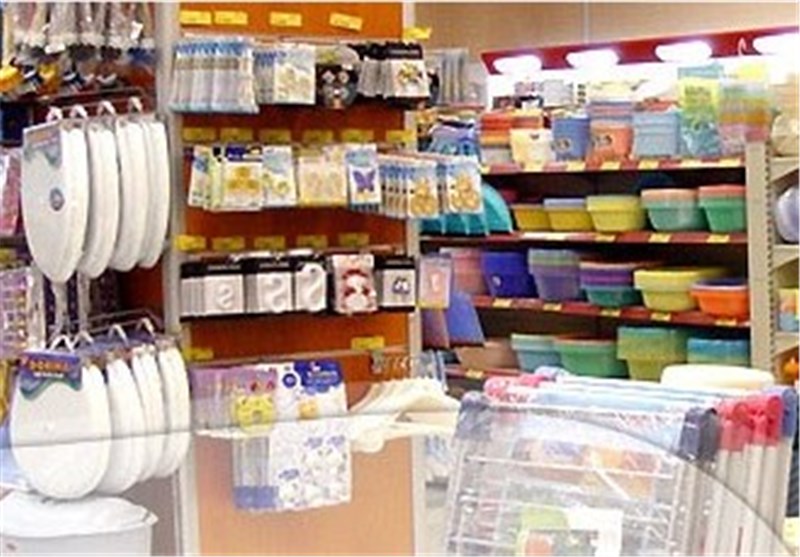Debate Rages about Chemicals, Effects on Young Brains
TEHRAN (Tasnim) – The number of chemicals known to be toxic to children's developing brains has doubled over the last seven years, researchers said.
Dr. Philip Landrigan at Mount Sinai School of Medicine in New York and Dr. Philippe Grandjean from Harvard School of Public Health in Boston, authors of the review published Friday in The Lancet Neurology journal, say the news is so troubling they are calling for a worldwide overhaul of the regulatory process in order to protect children's brains.
"We know from clinical information on poisoned adult patients that these chemicals can enter the brain through the blood brain barrier and cause neurological symptoms," said Grandjean, the CNN reported.
Quick Clicks
"When this happens in children or during pregnancy, those chemicals are extremely toxic, because we now know that the developing brain is a uniquely vulnerable organ. Also, the effects are permanent."
The two have been studying industrial chemicals for about 30 years. In 2006, they published data identifying five chemicals as neurotoxicants -- substances that affect brain development and can cause a number of neurodevelopmental disabilities including attention-deficit hyperactivity disorder, autism, dyslexia and other cognitive damage, they said.
Those five are lead, methylmercury, arsenic, polychlorinated bipenyls, or PCBs, and toluene.
Banned in the United States in 1979, PCBs were used in hundreds of products including paint, plastic, rubber products and dyes. Toluene is in household products like paint thinners, detergents, nail polish, spot removers and antifreeze.
Now, after further review, six more chemicals have been added to the list: manganese; fluoride; tetrachloroethylene, a solvent; a class of chemicals called polybrominated diphenyl ethers, or flame retardants; and two pesticides, chlorpyrifos, which is widely used in agriculture, and dichlorodiphenyltrichloroethane, or DDT.
"The continuing research has identified six new chemicals that are toxic to the developing human brain," said Landrigan. "We're turning up chemicals at the rate of about one a year that we're discovering are capable of damaging the developing brain of a human fetus or human infant."
To examine fluoride, which is in tap water in many areas, Landrigan and Grandjean looked at an analysis of 27 studies of children, mostly in China, who were exposed to fluoride in drinking water at high concentrations. The data, they said, suggests a decline on average of about seven IQ points.
There's another big concern: "We are very worried that there are a number of other chemicals out there in consumer products that we all contact every day that have the potential to damage the developing brain, but have never been safety tested," Landrigan said.
"Over the last six or seven years we are actually adding brain toxic chemicals at a greater speed than we are adding toxicity evidence in children's brains," Grandjean said.
"At least 1,000 chemicals using lab animals have shown that they somehow interfere with brain function in rodents -- rats and mice -- and those are prime candidates for regulatory control to protect human developing brains. But this testing has not been done systematically."
At greatest risk? There are pregnant women and small children, according to Grandjean. According to the review, the biggest window of vulnerability occurs in utero, during infancy and early childhood.
The impact is not limited to loss of IQ points.
"Beyond IQ, we're talking about behavior problems -- shortening of attention span, increased risk of ADHD," Landrigan said.
"We're talking about emotion problems, less impulse control, (being) more likely to make bad decisions, get into trouble, be dyslexic and drop out of school. ... These are problems that are established early, but travel through childhood, adolescence, even into adult life."
It's not just children: All these compounds are toxic to adults, too. In fact, in 2006 the pair documented 201 chemicals toxic to the adult nervous system, usually stemming from occupational exposures, poisonings and suicide attempts.
The American Chemistry Council, meanwhile, called the review a "rehash" of the authors' first review.
"This iteration is as highly flawed as the first, as once again the authors ignore the fundamental scientific principles of exposure and potency," said council spokesman Scott Jensen.
"What is most concerning is that the authors focus largely on chemicals and heavy metals that are well understood to be inappropriate for children's exposure, are highly regulated and/or are restricted or being phased out. They then extrapolate that similar conclusions should be applied to chemicals that are more widely used in consumer products without evidence to support their claims. Such assertions do nothing to advance true scientific understanding and only create confusion and alarm."
Landrigan and Grandjean now say all untested chemicals in use and all new chemicals should be tested for developmental neurotoxicity.
This is not a new concept. In 2007, the European Union adopted regulations known as REACH -- Registration, Evaluation, Authorization and Restriction of Chemicals -- to protect human health from risks posed by chemicals. REACH covers all chemicals, placing the burden of proof on companies to prove that any chemicals they make are safe.
"We are behind right now and we're falling further behind," Landrigan said. "... I find it very irritating some of the multinational manufacturers are now marketing products in Europe and the US with the same brand name and same label, but in Europe (they) are free of toxic chemicals and in the US they contain toxic chemicals."
The best example of this, he said, is cosmetics and phthalates. Phthalates are a group of chemicals used in hundreds of products from cosmetics, perfume, hair spray, soap and shampoos to plastic and vinyl toys, shower curtains, miniblinds, food containers and plastic wrap.





